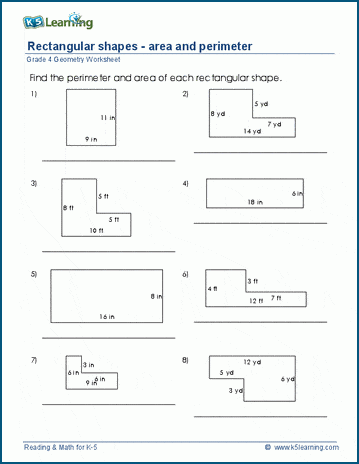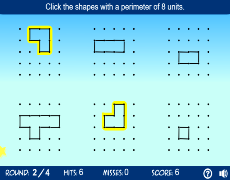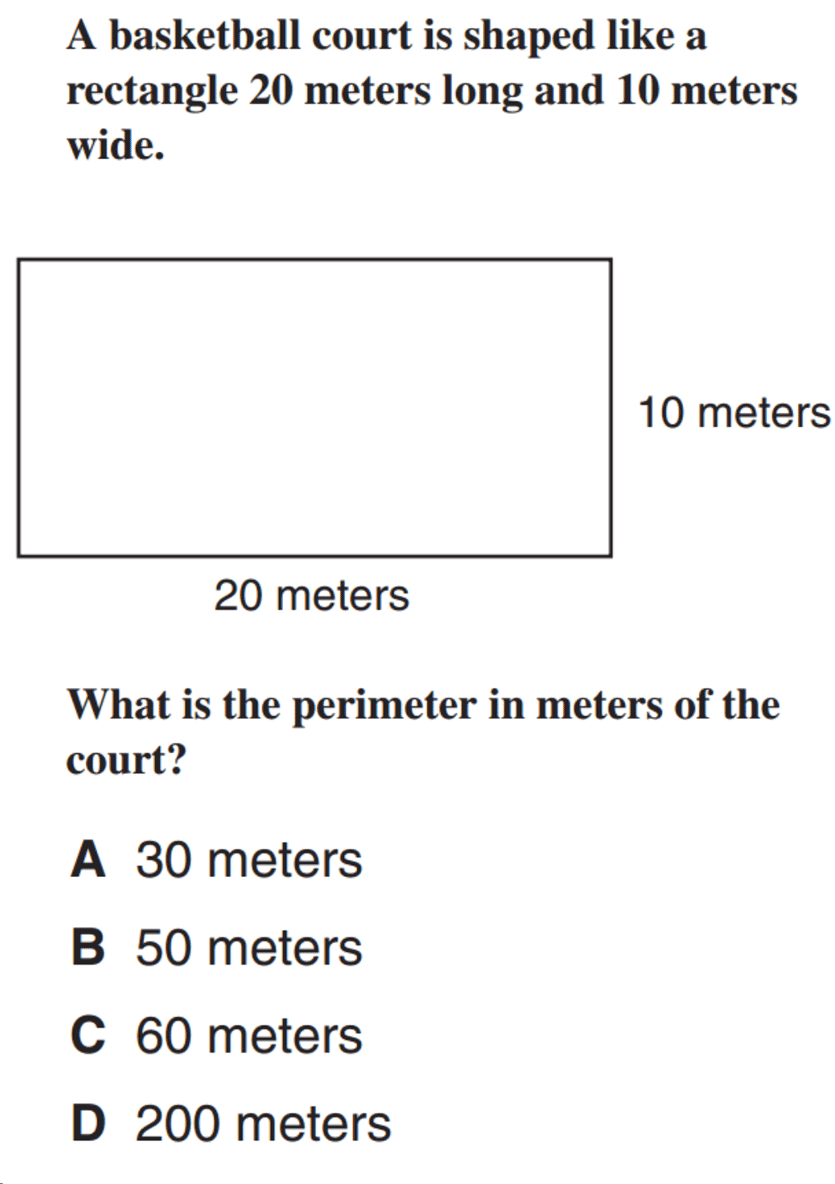Topic shape with infinite perimeter: Explore the enigmatic world of shapes with infinite perimeters, a realm where geometry defies intuition, blending art and mathematics into an endlessly fascinating tapestry.
Table of Content
- What is a shape with infinite perimeter?
- Understanding the Concept of Infinite Perimeters
- Examples of Shapes with Infinite Perimeters
- The Mathematics Behind Infinite Perimeters
- Real-World Applications and Implications
- Challenges in Visualizing and Measuring Infinite Perimeters
- YOUTUBE: Mandelbrot Fractal Zoom | Mirror of Infinity | Meditation and Focusing
- Historical Perspectives and Key Contributions
- Comparing Finite and Infinite Perimeters in Geometry
- Advanced Theories and Current Research Trends
- Educational Approaches to Teaching Infinite Perimeters
- Future Directions and Unanswered Questions
What is a shape with infinite perimeter?
A shape with infinite perimeter is a geometric figure where the length of its boundary or circumference is infinitely long.
One example of a shape with infinite perimeter is the Koch snowflake. It is a fractal curve created by iteratively adding smaller equilateral triangles to the edges of an initial triangle. As more iterations are added, the length of the curve increases infinitely. Each iteration adds smaller and smaller triangles to the edges, resulting in an infinitely detailed shape with an infinitely long perimeter.
Another example is a fractal-based curve known as the Hilbert curve. It is a space-filling and self-replicating curve that continuously zigzags through space, covering an infinite amount of area. The length of the Hilbert curve also increases infinitely as more iterations are added.
Shapes with infinite perimeter are often unique and exhibit self-similar or recursive properties, meaning that they can be broken down into smaller, similar copies of themselves. These shapes challenge traditional geometric concepts and provide interesting insights into the nature of infinity.
READ MORE:
Understanding the Concept of Infinite Perimeters
The concept of shapes with infinite perimeters, often linked to fractals like the Koch snowflake, is a fascinating area in geometry and mathematics. Fractals, like the Koch snowflake, are created through iterative processes, where a simple pattern is repeated infinitely. Each iteration in the Koch snowflake, for example, involves adding smaller triangles to each side, thereby increasing the perimeter with each step. Despite this infinite growth in perimeter, these shapes can still enclose a finite area. This paradoxical nature challenges our usual understanding of geometric dimensions.
Another interesting fractal is the Sierpinski Triangle, constructed by repeatedly removing smaller triangles from a larger one. Despite its simplicity, this fractal exhibits a complex structure and introduces the concept of fractional dimensions. The idea of a fractional dimension, which is neither a whole number nor a traditional fraction, emerges from how these fractals scale. For instance, if you double the sides of a Sierpinski triangle, the shape doesn’t double in area or volume but multiplies in a way that\"s unique to its fractal nature.
These fascinating properties of fractals like the Koch snowflake and the Sierpinski Triangle are not just theoretical curiosities. They have practical implications in various fields, from antenna design to computer graphics, and even help in understanding natural patterns and processes. Thus, the study of shapes with infinite perimeters is not only about appreciating their mathematical beauty but also about exploring their applications in the real world.

Examples of Shapes with Infinite Perimeters
The concept of shapes with infinite perimeters is best exemplified in the world of fractals, with the Koch snowflake and the Sierpinski triangle being prime examples.
- Koch Snowflake: This fractal starts as an equilateral triangle. With each iteration, a smaller triangle is added to each side, thus increasing the perimeter indefinitely. Despite the infinite growth of its perimeter, the Koch snowflake encloses a finite area, a unique characteristic of such fractals.
- Sierpinski Triangle: Another fascinating example is the Sierpinski Triangle. It begins as a single triangle, from which smaller central triangles are recursively removed. This process results in a fractal with an infinite perimeter, yet, like the Koch snowflake, it also has a finite area.
- Mandelbrot and Julia Sets: In the realm of complex numbers, the Mandelbrot and Julia sets provide stunning visual examples of fractals. They are created by iterating complex number functions and have boundaries that exhibit intricate, infinitely detailed perimeters.
These shapes are not just mathematical curiosities; they have practical applications in various fields, including computer graphics, antenna design, and more. Their unique properties challenge our traditional understanding of dimensions and space.

The Mathematics Behind Infinite Perimeters
Understanding the mathematics behind shapes with infinite perimeters involves delving into the world of fractals. Fractals, such as the Koch snowflake and the Sierpinski triangle, are characterized by self-similarity, meaning they repeat a pattern at every scale. The key to their infinite perimeters lies in this repetitive process.
- Koch Snowflake: Each iteration of the Koch Snowflake adds smaller triangles to each side, effectively multiplying the perimeter by a factor greater than 1 in each step. Mathematically, the length of each side in the iteration can be represented by a geometric series that diverges, leading to an infinite perimeter.
- Sierpinski Triangle: Similar to the Koch snowflake, the Sierpinski Triangle undergoes a recursive process where smaller triangles are removed. With each iteration, the number of triangles increases exponentially, while the length of each side decreases geometrically. This creates an endlessly intricate boundary, culminating in an infinite perimeter.
- Mandelbrot and Julia Sets: In complex analysis, the Mandelbrot and Julia sets demonstrate infinite perimeters through the iteration of complex functions. These sets show how iterating simple equations can lead to complex boundaries with infinite detail.
The fractal dimension is a crucial concept in understanding these shapes. Unlike regular geometric figures, fractals possess non-integer dimensions, indicating how they fill space more efficiently than their topological dimension would suggest. For example, while a line is one-dimensional, a fractal curve can have a dimension slightly greater than 1, reflecting its complex structure.
The study of fractals provides insight not just into theoretical mathematics, but also into natural patterns, technology, and art, demonstrating the real-world relevance of these fascinating geometric constructs.

Real-World Applications and Implications
Shapes with infinite perimeters, particularly fractals, have fascinating applications in various real-world scenarios. Understanding these applications helps in appreciating the practical value of these seemingly abstract mathematical concepts.
- City Planning and Architecture: Some cities naturally evolve in fractal patterns, resembling the self-similar structures of fractals. This organic development can be more efficient than pre-planned cities. Fractal principles are also applied in architecture for designing structures that mimic natural patterns.
- Medical Diagnostics: Fractal geometry is used in medical diagnoses, such as cancer detection. Since healthy human blood vessel cells typically grow in orderly fractal patterns, abnormalities like cancerous cells, which deviate from these patterns, become easier to identify.
- Image Compression and Digital Graphics: Fractal-based algorithms are crucial in image compression, allowing for efficient data storage without significant loss of detail. This technology is extensively used in digital graphics and 3D model creation.
- Antenna Design: The design of antennas often utilizes the self-similar nature of fractals. This approach leads to antennas that can operate at multiple frequencies and are more efficient in terms of space and material usage.
- Gaming Industry and Animation: In gaming and animation, designers use fractal concepts to create intricate landscapes, characters, and effects. These designs enhance the visual appeal and realism of virtual environments.
- Astronomy and Space Exploration: Fractals assist astronomers in understanding the complex structures of celestial bodies and galaxies. The measurement of orbits and the movement of planets also incorporate fractal concepts.
- Environmental Analysis and Geography: Fractals describe natural phenomena like coastlines, mountains, and cloud formations. They provide a systematic method to capture the \"roughness\" of these objects, aiding in environmental analysis and geographic studies.
- Fashion and Art: In art and fashion, fractal principles guide designers in creating patterns and structures. This influence is evident in fabric cutting, painting techniques, and overall aesthetic design.
These applications demonstrate that shapes with infinite perimeters are not just theoretical constructs but have practical implications across diverse fields, from technology and science to art and nature.

_HOOK_
Challenges in Visualizing and Measuring Infinite Perimeters
The concept of shapes with infinite perimeters, especially in the context of fractals, presents unique challenges in both visualization and measurement. These challenges stem from the nature of fractals and their intricate, self-repeating patterns.
- Visual Complexity: Fractals, like the Koch snowflake or the Sierpinski Triangle, display a high level of detail at every scale. This makes visualizing them in their entirety challenging, as the pattern repeats infinitely, and more detail emerges with each magnification.
- Measurement Limitations: Traditional methods of measurement are inadequate for fractals. In trying to measure something like the Koch snowflake, one can never find a small enough straight segment to conform to the curve, as its jagged pattern reappears, at arbitrarily small scales. This results in the need for an infinite amount of \"tape\" to cover the curve completely, leading to the concept of an infinite perimeter.
- Conceptual Understanding: The idea of an infinite perimeter enclosing a finite area is counterintuitive and challenges our conventional understanding of geometry. It requires a shift in perspective to understand and accept this paradoxical nature.
- Computational Aspects: Digitally rendering fractals to visualize their infinite perimeters demands considerable computational resources, especially as the level of detail increases with each iteration.
- Mathematical Complexity: The mathematics underlying fractals involves advanced concepts like recursion, self-similarity, and fractional dimensions, which can be complex and difficult to grasp.
These challenges highlight the unique nature of fractals and other shapes with infinite perimeters. They require innovative approaches in both mathematics and technology to understand and explore them fully.
Mandelbrot Fractal Zoom | Mirror of Infinity | Meditation and Focusing
\"Immerse yourself in the mesmerizing world of fractals! Discover the intricate patterns and infinite complexity that make fractals a true work of art. Watch this captivating video and let your mind be astounded by the beauty of these mathematical wonders.\"
Historical Perspectives and Key Contributions
The exploration of shapes with infinite perimeters, particularly in the context of fractals, has a rich historical background involving contributions from several key mathematicians. This exploration spans from early geometric studies to the modern understanding of fractals.
- Early Discoveries: The concept of infinite perimeters traces back to ancient times. Geometric studies have always been driven by practical needs in areas such as surveying, construction, and astronomy, and have involved complex principles and calculations.
- Fractals and Iteration: The study of fractals began in the 17th century with notions of recursion. Pioneering work by mathematicians such as Bernard Bolzano, Bernhard Riemann, and Karl Weierstrass in the 19th century laid the groundwork for the formal study of continuous but non-differentiable functions.
- Modern Fractal Geometry: Benoît Mandelbrot, in the 20th century, coined the term \"fractal\" and expanded its definition. He defined fractals as rough or fragmented geometric shapes that can be split into parts, each of which is a reduced-size copy of the whole. This definition revolutionized the understanding of fractals and opened up new avenues for research and applications.
- Fractals in Nature and Technology: The study of fractals has extended beyond pure mathematics to describe natural phenomena and processes in various fields such as technology, art, and architecture. Fractals have been found in natural patterns like coastlines, mountains, and even in the growth patterns of trees and plants.
- Key Mathematical Properties: Fractals are characterized by self-similarity and possess a non-integer dimensional measure known as the fractal dimension. This dimensionality reflects how fractals fill space more efficiently than their topological dimension suggests.
The historical journey of shapes with infinite perimeters, especially fractals, illustrates the evolving understanding of geometry, from early empirical discoveries to the advanced mathematical theories of today.

Shape with Infinite Perimeter
\"Unveil the secrets of the perimeter and how it shapes our understanding of shapes and figures. Explore the concept of perimeter in this intriguing video, where geometry comes to life. Prepare to be amazed by the significance and applications of this fundamental mathematical concept!\"
Comparing Finite and Infinite Perimeters in Geometry
The distinction between finite and infinite perimeters in geometry reveals fascinating aspects of mathematical understanding and application. This comparison involves exploring the properties of regular geometric shapes and contrasting them with fractal structures like the Koch snowflake.
- Finite Perimeters: Regular geometric shapes such as squares, circles, and triangles have finite perimeters. This means that the boundary length around these shapes can be calculated using standard geometric formulas. These shapes represent a clear, finite boundary that encloses a specific area.
- Infinite Perimeters: Fractals like the Koch snowflake, on the other hand, present an intriguing scenario where the perimeter of the shape becomes infinite. As the fractal undergoes each iteration, new segments are added, increasing the perimeter exponentially. Despite this, the area enclosed by these fractals remains finite, a concept that challenges traditional geometric understanding.
- Mathematical Implications: The concept of infinite perimeters in fractals brings forth the idea of self-similarity and recursion in geometry. It highlights how repeating a simple process can lead to complex and counterintuitive results.
- Visualization Challenges: Visualizing a shape with an infinite perimeter can be challenging, as each level of zoom reveals more detail without ever reaching a definitive boundary. This is in stark contrast to finite shapes where the boundaries are clearly defined and observable.
- Applications in Real World: Understanding these concepts has practical implications in various fields, including computer graphics, where fractal geometry is used for creating complex and realistic images and landscapes.
Comparing finite and infinite perimeters opens up a world where traditional geometric concepts are pushed to their limits, leading to new discoveries and a deeper understanding of the mathematical world.
Advanced Theories and Current Research Trends
The field of shapes with infinite perimeters, especially fractals, is at the forefront of modern mathematical and scientific research. Advanced theories and current trends in this area are diverse, covering aspects from mathematical models to practical applications in various fields.
- Fractals and Mathematical Models: The initial visualization of fractals was achieved through mathematical models, particularly using recursive feedback loops. These models cycle inputs from equations millions of times to generate detailed images. Benoît Mandelbrot\"s simulation of the Mandelbrot set on an IBM supercomputer is a notable example, where a simple equation produced infinitely detailed and complex images. This discovery bridged the gap between arts and mathematics, highlighting the interconnectedness of these fields.
- Natural Occurrences of Fractals: Fractals are not just mathematical curiosities but are abundantly present in nature. Examples include the Romanesco broccoli, which has a visually striking fractal form, and the arrangement of sunflower florets along Fermat’s spiral. These patterns are efficient ways for ecosystems to streamline energy. In human anatomy, blood vessels and bronchioles also follow fractal patterns, ensuring efficient distribution and gas exchange.
- Shape-Shifting Materials: Recent research has delved into the creation of shape-shifting materials based on fractal geometry. These materials can morph into various shapes and bear weight, offering potential applications in robotics, biotechnology, and architecture. Grounded in geometry, these materials demonstrate the capacity for deformation control at multiple scales.
- Theoretical Physics: Institutions like the Perimeter Institute are exploring the fundamental questions of our universe, from quantum information to black holes. This research includes the study of fractals and their role in the fabric of space and time, indicating the significance of fractal geometry in understanding the cosmos.
- Applications in Technology and Art: The study of fractals has influenced technology and art, with their intricate patterns being used in computer graphics, architecture, and even in creating art.
This ongoing research into shapes with infinite perimeters, particularly fractals, is expanding our understanding of both the mathematical world and the natural universe, demonstrating the profound impact of these complex geometries.
Educational Approaches to Teaching Infinite Perimeters
Teaching the concept of infinite perimeters, especially in the context of fractals, involves innovative and interactive methods. These approaches not only explain the mathematical theory but also engage students in a hands-on manner.
- Interactive Online Resources: Utilizing online platforms like Khan Academy offers comprehensive lessons and practice exercises on area and perimeter concepts. This method provides an accessible and flexible learning environment for students to explore and understand geometric concepts, including those with infinite perimeters.
- Visual Demonstrations: Using visual aids such as videos helps in demonstrating the concept of infinite perimeters. Websites like YouTube host educational content that can simplify complex topics like fractals, making them easier for students to grasp.
- Hands-on Activities: Encouraging students to create their own fractals or shape-shifting models can be an effective way to teach the concept of infinite perimeters. This approach helps students understand the practical aspects of the theory.
- Comparative Analysis: Encouraging students to compare and contrast finite and infinite perimeters deepens their understanding. This can involve analyzing the differences in calculation methods, visualization, and applications of both types of perimeters.
- Problem-Solving Exercises: Incorporating problem-solving exercises that involve calculating areas and perimeters of both regular shapes and fractals can enhance students\" analytical skills and understanding of the subject.
These educational approaches aim to make the concept of infinite perimeters approachable and comprehensible, combining theoretical understanding with practical application to enhance student learning.
_HOOK_
READ MORE:
Future Directions and Unanswered Questions
The study of shapes with infinite perimeters, especially in the context of fractals like the Koch snowflake, opens a myriad of intriguing avenues for future exploration and research. These shapes challenge traditional notions of geometry and measurement, leading to questions about the nature of dimensionality and the limitations of conventional mathematical tools.
- Dimensionality and Measurement: The fractal dimensions of shapes like the Koch snowflake and the Sierpinski gasket reveal complexities beyond standard geometrical analysis. Understanding and measuring these dimensions, especially in shapes that transcend traditional one-, two-, or three-dimensional spaces, remains an ongoing challenge.
- Mathematical and Computational Modeling: Advancements in computational mathematics could provide new ways to model and understand shapes with infinite perimeters. These developments could offer insights into the properties of fractals and their behavior under various transformations.
- Applications in Natural Sciences: The relevance of fractal geometry in natural phenomena, like the branching patterns of trees or the structure of clouds, suggests potential for interdisciplinary research. Exploring these connections could lead to breakthroughs in fields ranging from biology to environmental science.
- Educational Implications: The inclusion of fractal geometry in educational curricula would enrich the learning experience, providing students with a broader understanding of mathematical concepts and their applications in the real world.
- Philosophical and Theoretical Implications: Infinite perimeters in finite spaces raise philosophical questions about the nature of infinity and the limits of human perception in understanding the universe. This could lead to new theoretical frameworks in both mathematics and philosophy.
As research continues, the potential to uncover novel properties and applications of these fascinating shapes remains vast. The intersection of mathematical theory, computational advancements, and practical applications promises to yield significant contributions to both science and mathematics.
Exploring shapes with infinite perimeters like the Koch snowflake reveals a mesmerizing intersection of geometry, nature, and philosophy. This journey invites us to rethink the boundaries of mathematics and embrace the infinite complexities of our universe.




